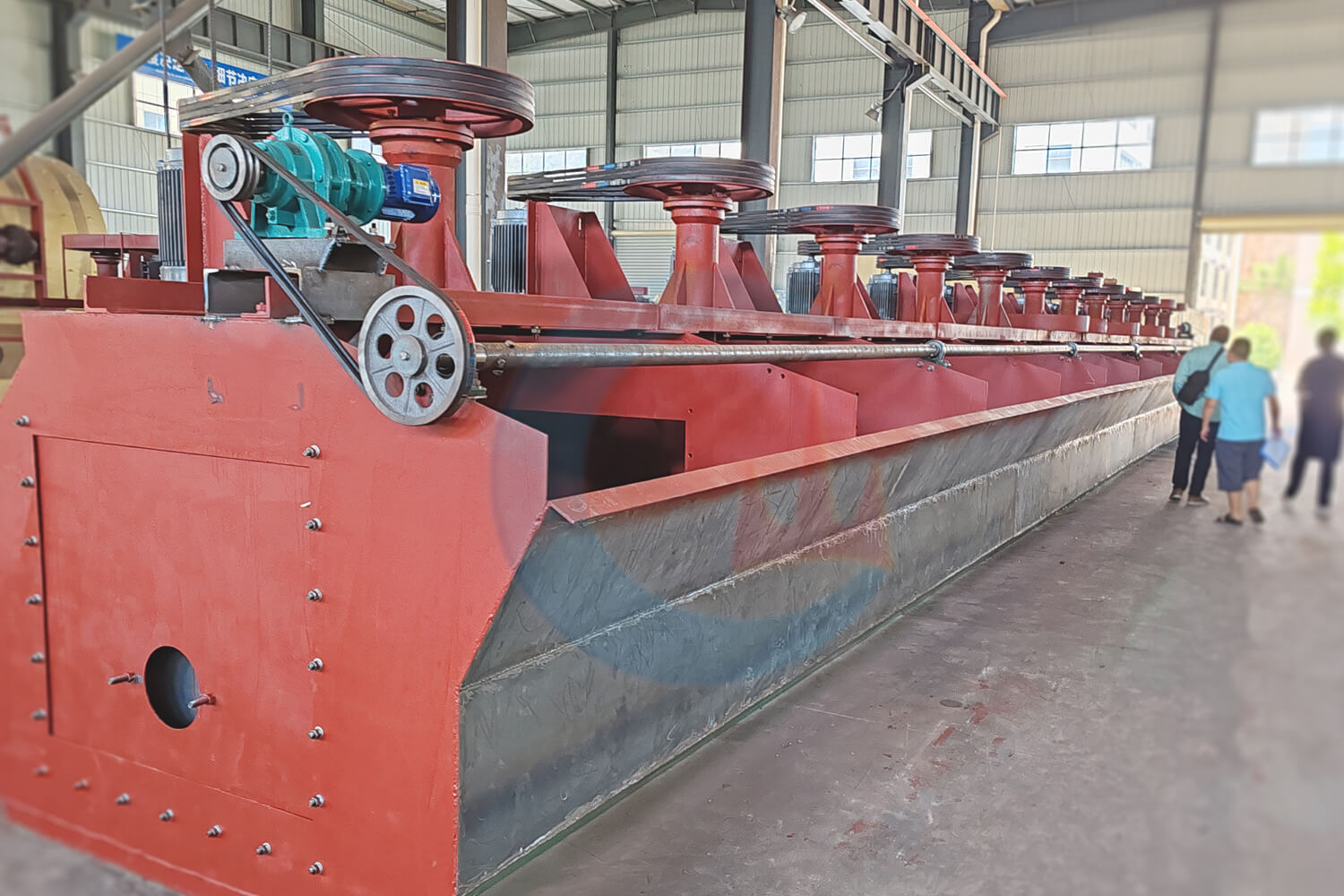It is very common for minerals to coexist with each other. There are fewer and fewer feldspars that can be mined directly and more and more associated minerals such as iron ore. We will separate and remove associated minerals and other harmful impurities to obtain high-grade feldspar concentrate. Harmful impurities are mainly small, such as iron and titanium, which are involved in the iron removal process. Therefore, finding an effective beneficiation method to remove impurities from feldspar is crucial to increasing feldspar's commercial value and availability in various industries such as ceramics, glass manufacturing, and building materials. Flotation and magnetic separation are often used.
Feldspar Ore Information and Applications
Feldspar is an aluminosilicate mineral containing calcium, sodium, and potassium. It has many kinds, such as albite, anorthite, barium feldspar, baro feldspar, microplagioclase, orthoclase, feldspar and so on. They are widely used in ceramic blank, glaze, fireproof calcium silicate boards, glass and enamel industries, abrasive tools, etc. Beautiful color and luster can be used as decorative stones and secondary gemstones. In addition, feldspar can also make potash fertilizer; feldspar with better quality is used to make glass bulbs for TV imaging.
It must remove the associated minerals by beneficiating to obtain high-grade feldspar concentrate. The harmful impurities are mainly iron, titanium and other small impurities, which involve the iron removal process.
The occurrence state of iron in feldspar
Mainly composed of limonite, hematite and magnetite, the particle size is >0.1mm, and the shape is needle-like, spherical, and flaky. It is dispersed in the feldspar mineral and is easily removed.
When iron-containing gangue minerals are present, such as biotite, pyrite, ilmenite, epidote, hornblende, etc., such gangue minerals are also easy to remove
The iron oxide formed by iron dyeing penetrates into the surface of feldspar ore in drop form or along the cleavage seams of feldspar and the cracks between minerals. The iron oxide formed from this iron staining is difficult to remove.
Feldspar typically contains a range of impurities, including iron oxides, mica and silica. These impurities can reduce the quality and value of feldspar and make it less suitable for specific applications. Usually, flotation and magnetic separation methods are used to solve this feldspar mineral processing problem.

mineral processing methods of Feldspar ore impurity removal
1. Magnetic Separation
Using magnetic separation technology to remove iron from feldspar is suitable for the ore contained in the ore with strong magnetic properties. Because the magnetic separation process uses the different magnetic properties of iron-containing minerals in the ore to determine. Mainly use the other magnetic properties of iron-containing minerals in the ore to formulate a related magnetic separation process, which can remove most of the strong magnetic ores. However, for some ores with a high degree of weathering, iron minerals are easily sludged during the grinding process, and it is difficult to remove these iron minerals by strong magnetic separation.
Strong magnetic separation should be used for separating weak magnetic minerals such as iron oxide, mica, and garnet in feldspar ore. The selection of magnetic separation equipment needs to be determined according to the properties of the ore. Commonly used magnetic separation equipment includes wet drum magnetic separators, vertical ring pulsating high gradient magnetic separators, and flat magnetic separators.
2. Flotation Process
Iron removal by flotation can be perfect for iron-containing minerals in clay and fine-grained grades, but it is ineffective for hard ores. For severely weathered ores, secondary sludge may be produced in the stage of crushing and grinding, which is likely to cause high viscosity of flotation foam, resulting in lower collector selectivity and poor effect. In addition, when the iron-containing impurities in the feldspar are pyrite, mica or garnet, tourmaline, amphibole, and other iron-containing alkali metal silicate minerals, the flotation separation method is often used to remove the impurities.
The conditions for removing feldspar impurities by flotation are as follows:
- The sulfide ore is extracted by flotation with a xanthate collector under the natural pH condition of the pulp;
- For mica minerals, it can be removed in an amine collector system with a slurry pH of 2.5-3.5;
- For silicate minerals, when the pH of the pulp is 3-4, sulfonate collectors can be used to separate them from the surface.
By effectively separating these unwanted elements through feldspar ore flotation and magnetic separation, JXSC will continue to optimize producing high-quality feldspar beneficiation processes to meet industry needs while minimizing environmental impact.
